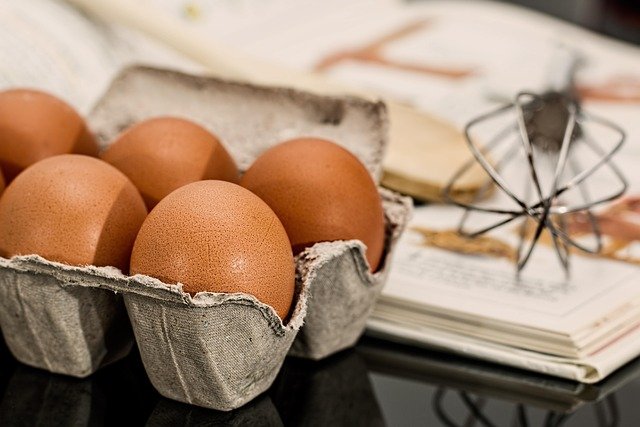Project grocery needs from scaled menus to reduce food waste
Estimating grocery needs from scaled menus helps kitchens and households reduce waste by matching purchases to planned servings. A clear approach to portioning, recipe scaling, and batching improves shopping accuracy and keeps costs aligned with actual consumption.

Projecting grocery needs starts with practical data: how many servings you plan, how recipes scale, and what portion sizes you will serve. Rather than guessing quantities, map each recipe’s ingredients to scaled portions and weights, noting conversions between volume and mass. Doing so reduces excess purchases, helps manage allergens and sodium control, and supports consistent nutrition outcomes when planning mealprep or batch cooking. This approach benefits restaurants, caterers, and home cooks aiming to align grocery buying with real demand.
Portioning and servings: how many portions do you need?
Accurate portioning begins by defining the intended serving size for each dish and translating that into ingredient weights or volumes. For consistent menus, record standard serving weights for proteins, grains, and vegetables so inventory matches expected consumption. When portioning, consider macronutrients per serving to maintain nutritional balance across meals, and watch micronutrients such as iron or vitamin C if specific dietary targets matter. Clear portion guidelines also reduce on-shift decision-making and minimize leftover waste.
Scaling recipes and conversions: what changes when you multiply a recipe?
Scaling a recipe requires more than multiplying ingredient quantities: factor in conversion adjustments, cooking vessel sizes, and yield changes. Liquids and spices may scale linearly, but ingredients affected by evaporation or binding (breads, sauces) may need conversion tweaks and time adjustments. Keep a conversions cheat sheet for weights-to-volumes to make scaling more reliable, and test scaled batches to refine yields. Recording actual yields after scaling helps improve future projections and reduce overbuying.
Macronutrients and micronutrients: can nutrition guide grocery planning?
Using macronutrients and micronutrients as planning metrics helps ensure that scaled menus support intended dietary goals. For batch-prepared menus, calculate calories, protein, fat, and carbohydrates per serving so you can forecast how much of each ingredient is required to meet targets. Micronutrients such as sodium should be tracked when stocking staples like canned goods or broths to prevent exceeding limits. Nutrition-focused projections support menu consistency and can influence purchasing decisions for higher-density ingredients.
Conversions, weights, and batching: how to prepare for efficient mealprep?
Batching and mealprep work best when conversions and weights are standard across a program. Create templates that list ingredient quantities in grams or ounces alongside common volume measures to speed shopping lists. Batching reduces packaging waste and often lowers unit costs, but accurate weights prevent surplus. For example, plan batch sizes that align with storage capacity and serving schedules to avoid spoilage. Regularly update templates based on actual yields recorded during mealprep sessions.
Allergens and sodium: what should shoppers and managers consider?
When projecting grocery needs, flag allergen-containing ingredients in your scaled recipes so purchases include safe substitutes where necessary. Ordering allergen-free alternatives in the correct quantities avoids last-minute swaps and returns. Monitor sodium at the ingredient level—broths, sauces, and cured items can substantially increase sodium per serving—so adjust ordering to accommodate low-sodium versions if the menu requires it. Clear labeling in shopping lists prevents accidental cross-contamination and unnecessary waste.
| Product/Service | Provider | Cost Estimation |
|---|---|---|
| Meal planning and scaling app (Pro tier) | Mealime | Free with optional Pro around $5–$6 per month (estimate) |
| Recipe manager and grocery list app | Paprika (Hobbyist Software) | One-time app purchase approx. $4–$30 depending on platform (estimate) |
| Recipe discovery and planning | Yummly | Free with optional Pro features around $4–$6 per month (estimate) |
| Recipe and batch planning | BigOven | Free basic; Pro around $2–$4 per month (estimate) |
| Grocery delivery/pickup services | Instacart / Walmart Grocery | Delivery fees vary; Instacart subscription and per-order fees, Walmart offers pickup and delivery fee tiers (estimates) |
Prices, rates, or cost estimates mentioned in this article are based on the latest available information but may change over time. Independent research is advised before making financial decisions.
This article is for informational purposes only and should not be considered medical advice. Please consult a qualified healthcare professional for personalized guidance and treatment.
Conclusion
Projecting grocery needs from scaled menus combines consistent portioning, careful conversions, and data from macronutrient and micronutrient tracking to reduce food waste. Establish templates for servings and weights, test scaled batches, and incorporate allergen and sodium considerations into shopping lists. Using dedicated planning tools or simple spreadsheet templates can bring precision to purchasing, align costs with demand, and make batching and mealprep more predictable.




